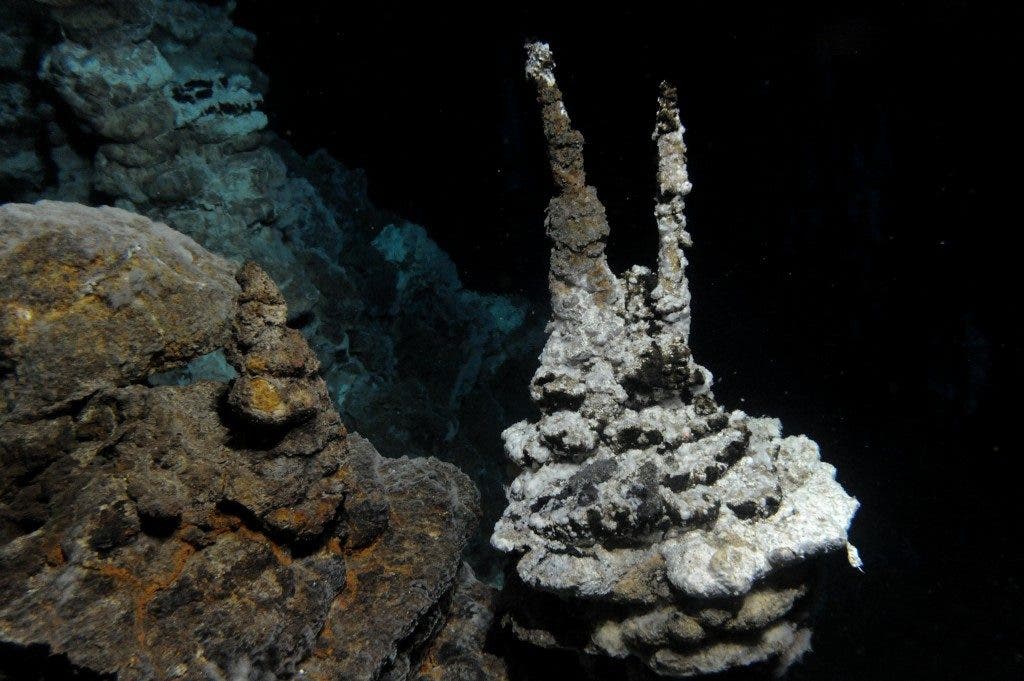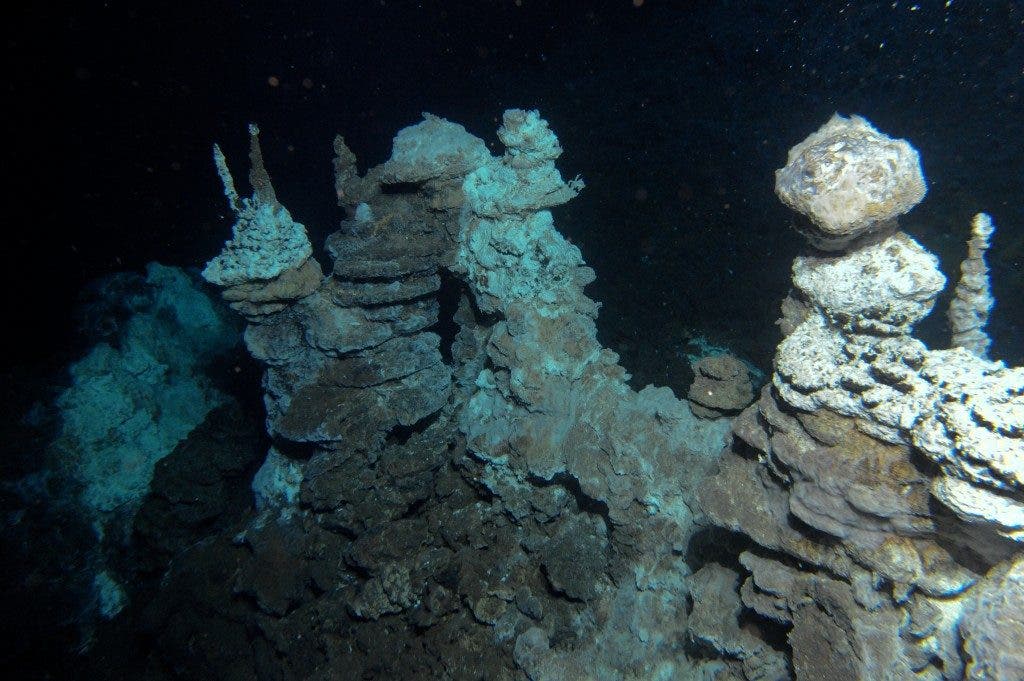The discovery of a new microorganism may help bridge the knowledge gap between simple and complex cellular organisms, also shedding light on how complex cellular life came to be.

Image of a hydrothermal vent field along the Arctic Mid-Ocean Ridge, close to where ‘Loki’ was found in marine sediments.
Credit: Centre for Geobiology (University of Bergen, Norway) by R.B. Pedersen
For all of life’s complexity on Earth, we generally divide it in two classes: prokaryotes, and eukaryotes. Prokaryotes are the simplest life forms, with small, simple cells without nuclei; they comprise only of Bacteria and a group of creatures called Archaea. Meanwhile, eukaryotes have large, complex cells with nuclei and a degree of internal organisation, and they make up for all the other life on our planet – everything that’s macroscopic, and much of the microscopic too.
The problem is that the difference between these two groups is so huge that how the latter evolved from the former still remains a mystery; recent studies have indicated that eukaryotes evolved from Archaea, but the differences between the two are hard to account for, and biologists haven’t been able to find any organism to link the two – until now.
“The origin of the eukaryotic cell remains one of the most contentious puzzles in modern biology,” the authors wrote. “Recent studies have provided support for the emergence of the eukaryotic host cell from within the archaeal domain of life, but the identity and nature of the putative archaeal ancestor remain a subject of debate.”

Caption: Image of a hydrothermal vent field along the Arctic Mid-Ocean Ridge, close to where ‘Loki’ was found in marine sediments.
Credit: Centre for Geobiology (University of Bergen, Norway) by R.B. Pedersen
Thijs Ettema from the University of Uppsala and his team may have finally found that missing link – they discovered a new archaea from deep marine sediments that could be the closest prokaryote to eukaryotes. The newly discovered organism, Lokiarchaeota, has genes which code for proteins only otherwise found in eukaryotes, which researchers believe to be a ‘starter kit’ for developing more complex cells.
“Our results provide strong support for hypotheses in which the eukaryotic host evolved from a bona fide archaeon, and demonstrate that many components that underpin eukaryote-specific features were already present in that ancestor,” the scientists said.
It’s exactly the kind of thing researchers were hoping to find – something that explains how cells developed from simple to complex. The long standing puzzles of how and why these two groups separated two billion years ago may finally be uncovered.
“The identification of Lokiarchaeota so early in the history of this nascent field suggests that more-closely related archaeal relatives of eukaryotes will soon be discovered. The genomes and cellular features of these relatives may provide a more detailed picture of the most recent common ancestor of eukaryotes and archaea, and may help to resolve the timing of the innovations that are used to define eukaryotes.









